Live shopping, or live stream shopping, combines the worlds of live streaming, social media, celebrity, and ecommerce, and it provides an interesting look into what could be in store for some facets of ecommerce selling in the future. If you're asking yourself, “What is live shopping?” this is the right place for you, as we take a look at the growing ecommerce trend, expand upon its purposes, significance in the ecommerce world, and how brands are finding success in the space. We'll also touch on some real-world examples to demonstrate how live shopping works.
What is Live Shopping?
As mentioned, some people call it live shopping; yet, we've also heard other phrases like live stream shopping, social shopping, and streamable shopping.
Regardless of its name, live shopping works similar to networks like QVC, HSN (Home Shopping Network), and ShopHQ, except instead of on TV, brands are able to sell their products in tandem with influencers who stream content on social platforms, effectively selling products directly through places like Instagram, Amazon, and Twitch. Not only that, but live shopping offers something you can't find on television. Whereas purchasing a product on QVC would require you to make a phone call, live shopping provides an online button for the customer to click through and instantly make a purchase online.
So, what is this live shopping experience?
- It's a real-time, live-streamed show, presentation, or entertainment segment done online.
- It's usually completed through a social platform like Instagram, YouTube, or TikTok, but Amazon and other shopping platforms like Alibaba have offerings as well.
- It typically utilizes a celebrity, influencer, or key opinion leader to host and sell products.
- It's often available to consumers on all types of devices like smartphones, desktop computers, and even on streaming devices like the Roku.
- It offers a way to complete a transaction right from the streaming service or a separate ecommerce payment module.
Essentially, we're seeing a combination of old ecommerce sales strategies and new technologies. The QVCs and HSNs of the world still run thriving businesses, have provided a way for brands to market their products, and work well by reaching out to those most interested in shopping through their TV.
But many people also see shopping networks as old-fashioned, boring, or lacking in entertainment value.
The rise of influencers, and technology for streaming and ecommerce, delivers an incredible opportunity to modernize the standard shopping network. Fashion, technology, and home goods brands can partner with influencers, celebrities, and notable figures to have them create entertaining, live-streamed content that's more likely to reach younger consumers. Formats vary, but some brands still want that QVC vibe, while others are more interested in sharing real-world clips from celebrities using the products (like with fashion shows and fitness videos). After promoting the product, the influencer tells customers to purchase the item through an online payment portal, which is much easier than requiring someone to pick up the phone and tell an operator their credit card number.
Platforms Used for Live Shopping
Instagram leads the way in live shopping, by a long shot.
Not only do most online influencers have a strong presence on Instagram, but there's actually a feature called Instagram Live Shopping for showing product demos, inviting buyers to participate in the live stream, and running collaborative shopping streams with other influencers.
To run an Instagram Live Shopping campaign, you must:
- Be located in the United States (this may get rolled out to other countries in the future).
- Own an Instagram Business account.
- Activate checkout capabilities on that account.
It's important to make sure the Instagram Live Shopping requirements are met by both your brand and the influencers talking about the product. For instance, it only seems to work if the influencer you hire also has a Business account and lives in the United States.
Instagram Live Shopping combines its Shops feature with that of Instagram Stories, Reels, and Feeds. The Shops tool lets brands generate ecommerce storefronts right on Instagram, with product catalogs and links to process payments through the app. The Live Shopping feature links to that same product catalog. Therefore, an influencer can begin a Story, Reel, or Feed and talk about the product while knowing that they can immediately link to a Shops product page without any problems.
Other platforms are following in Instagram's footsteps, and some brands have even combined current technologies to produce a similar configuration where you run a live stream and send people to a link where they can buy the product. Instagram Live Shopping simply makes it a little easier as opposed to merging two different products.
For instance, YouTube Live already offers a wonderful platform for running a live stream, accepting messaging from viewers, and linking to a third-party purchasing link.
Let's take a look at some of the primary platforms you can use to offer live shopping to your customers:
- The aforementioned Instagram, with its wonderful Live Shopping feature that brings together live streaming and instant ecommerce purchasing all from one platform.
- You can run a live shopping program on YouTube Live or Facebook Live, as long as you insert a link for purchasing products somewhere in the live stream. For instance, you could place a link in the live video description, within the messaging area, as a clickable YouTube link, or by having your influencer state the domain name. Better yet, use a combination of these options. YouTube has also introduced the ability to sync your Google Merchant Center to immediately place products in videos.
- Twitch offers one of the more interactive streaming platforms with several integrations and clickable links for online stores.
- Livescale.tv integrates with ecommerce sites like Shopify and offers in-video purchases, live streaming, a seamless checkout, and complete brand control over the live video.
- Amazon Live is Amazon's attempt at live shopping, with direct links to products on Amazon, a messaging box, and several other buttons for users to share, like, and follow influencers or brands.
- Talkshop.live functions as a social media platform with a shopping network, and it offers a wonderful discovery portal, social buying tools, and live chatting.
- Buywith functions as yet another live shopping platform, but it also has an excellent Coming Soon portal with countdown modules, Sign Up buttons, and information about the influencer. It also has a “Shop With Me” feature where the host is allowed to walk viewers through an immersive, interactive shopping experience.
- NTWRK provides tools for live shopping videos, along with an Episodes page for people to subscribe and come back to the shows they'd like to watch the most. It's a place for discovering new artists, brands, and products.
- Popshop is a live shopping platform with a discovery tool, a list of featured streams, and upcoming information about what you can watch in the future. All selling is integrated with the live commerce streams, and you can manage your brand, run a chatbox, and link to products.
- Taobao is a Chinese shopping network with live streaming features.
What's great about many of the non-social platforms is that they're able to push your live stream to social platforms. For example, Livescale isn't exactly a social network in itself, but it allows you to share live streams on social accounts like Instagram, Facebook, and more.
Examples of Live Shopping in the Real World
Real-world examples of live shopping are rampant on sites like Instagram, YouTube, and Amazon.
As mentioned before, Instagram leads the way in live shopping, so if you want even more ideas for your own brand, go to the Instagram app (Live Shopping is only available in the mobile app), then go to the Shop tab.
There are several shopping options to choose from, but the true Live Shopping feature is highlighted with a Live tag.
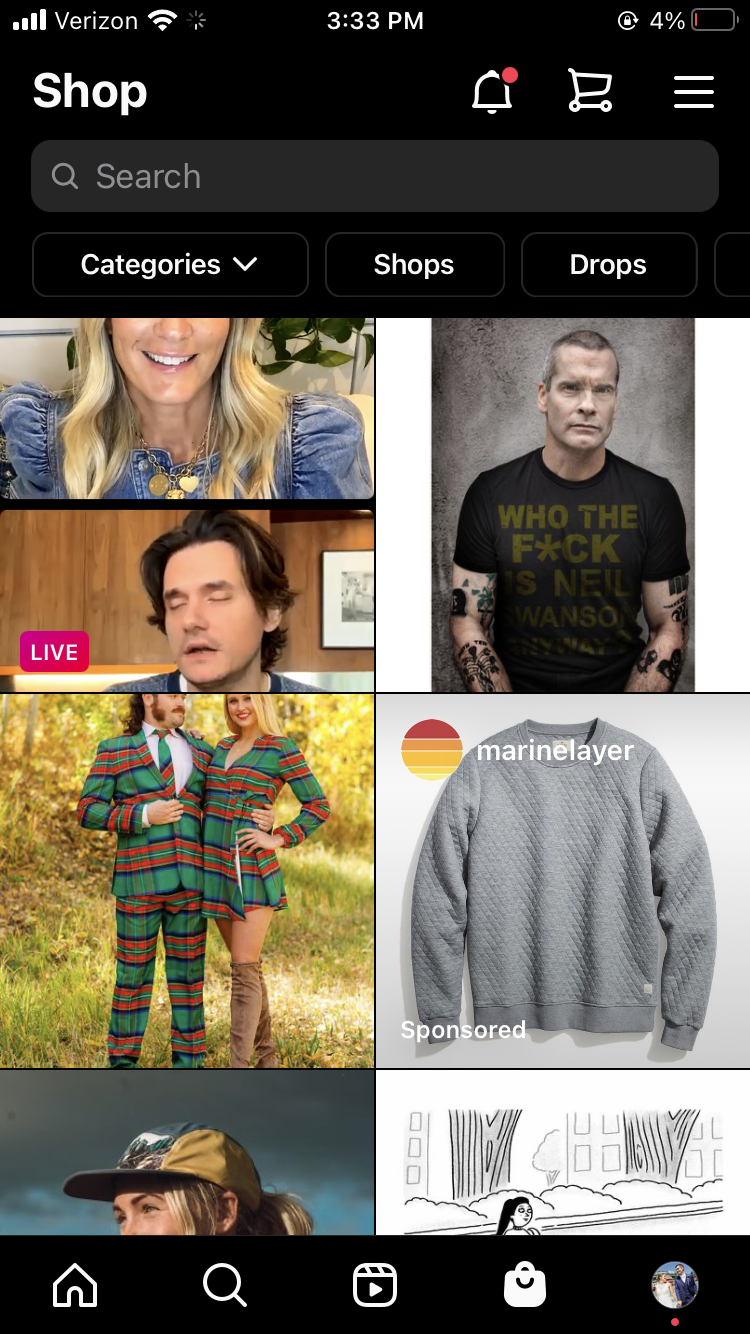
While putting together this article, The Laundress was hosting a Live Shopping event with John Mayer. The stream included a conversation between one of The Laundress CEOs and John Mayer, while also showcasing a partnership laundry detergent with John Mayer's name on it.
In the stream, you can see how many people are watching, comments that come in, and a box to write your own comments or make reactions.
Finally, Instagram Live Shopping offers an overlaying Add To Cart button with quick product information.

This way, users don't have to leave the Instagram app to make a purchase of the John Mayer laundry detergent.
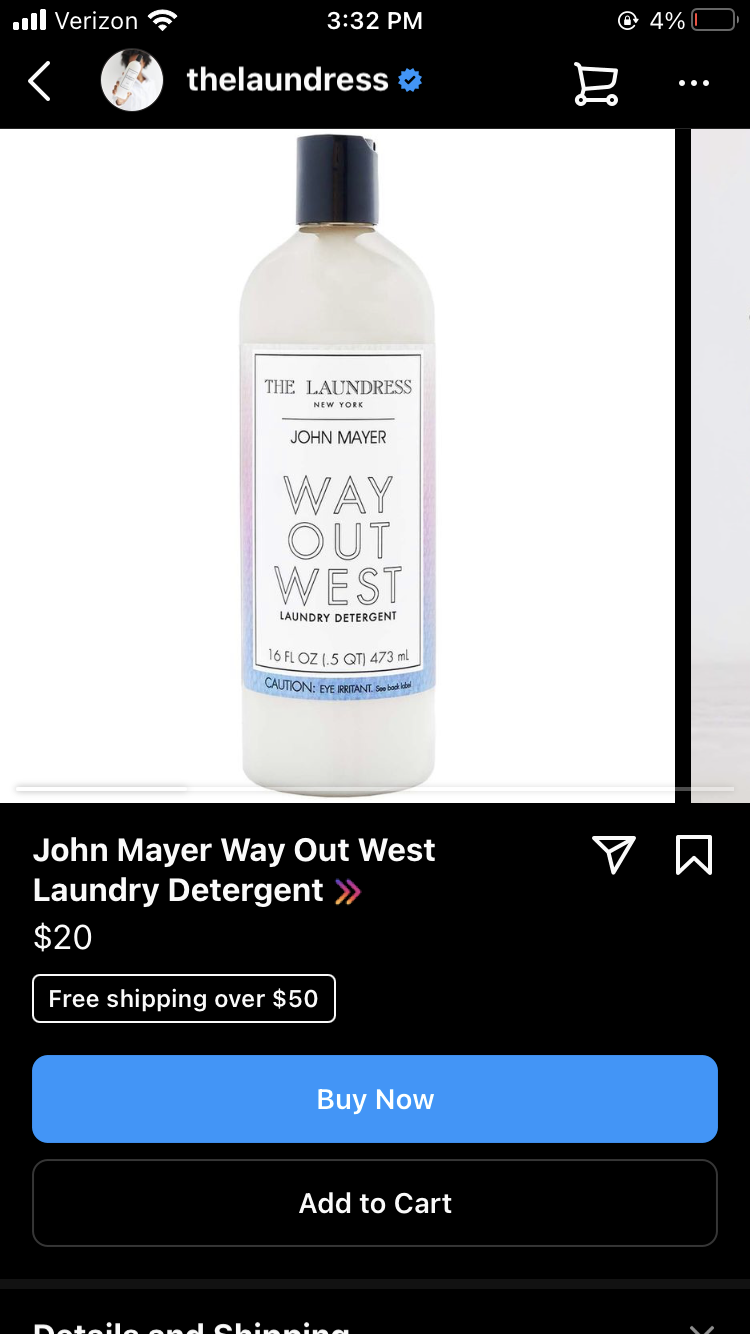
Another example of live shopping on Instagram takes an alternative route. Although this isn't officially through the Live Shopping feature, brands can make sponsored Reels and place a Shop Now call to action button in the live video. Instead of allowing online shopping within Instagram, this version sends them to an external link, most likely a product page.
For example, Therabody is known for teaming up with influencers who explain its products, then go into demonstrations on how to use them.
This one, in particular, features a fitness influencer who's streaming on the Reels section of Instagram. The stream includes buttons to share, like, and comment on the live video, along with a button to Shop Now.
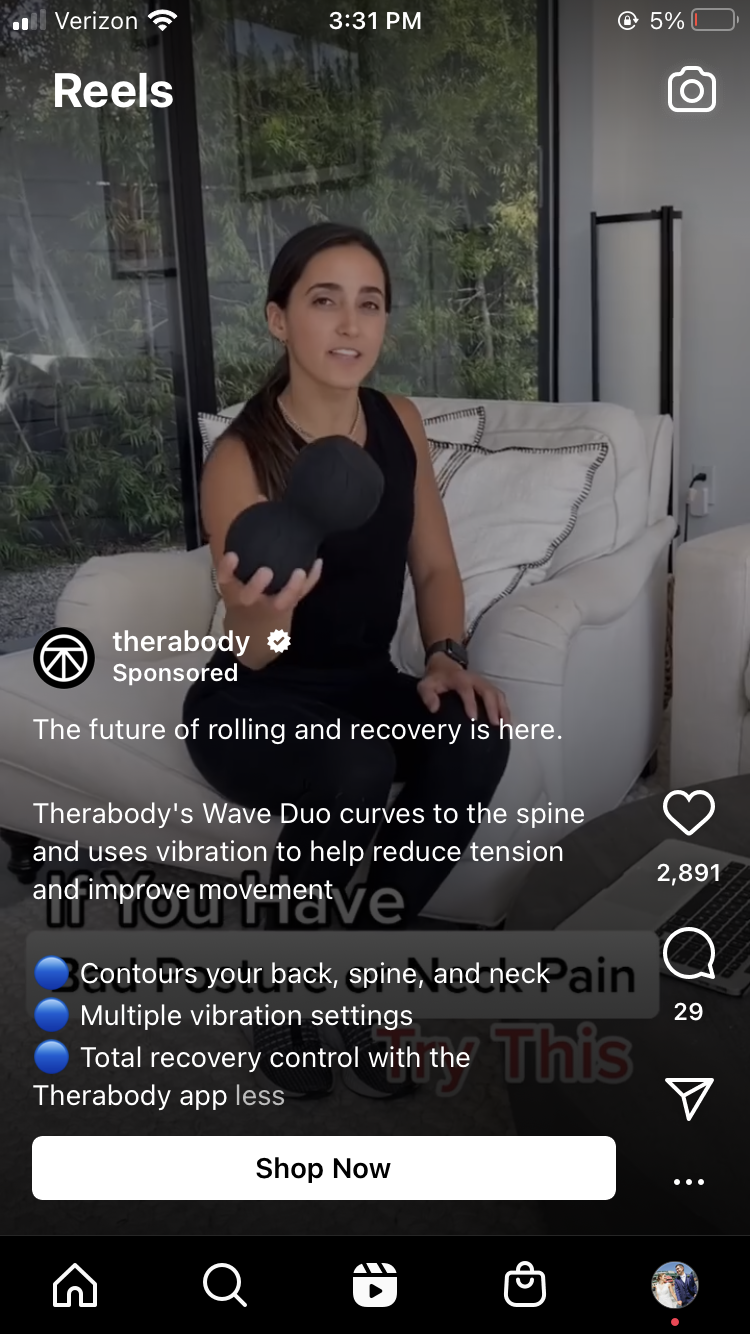
As mentioned, this isn't the real Live Shopping feature, but it ultimately produces the same result. It's great for brands that would rather send people to their own website instead of processing payments inside Instagram.
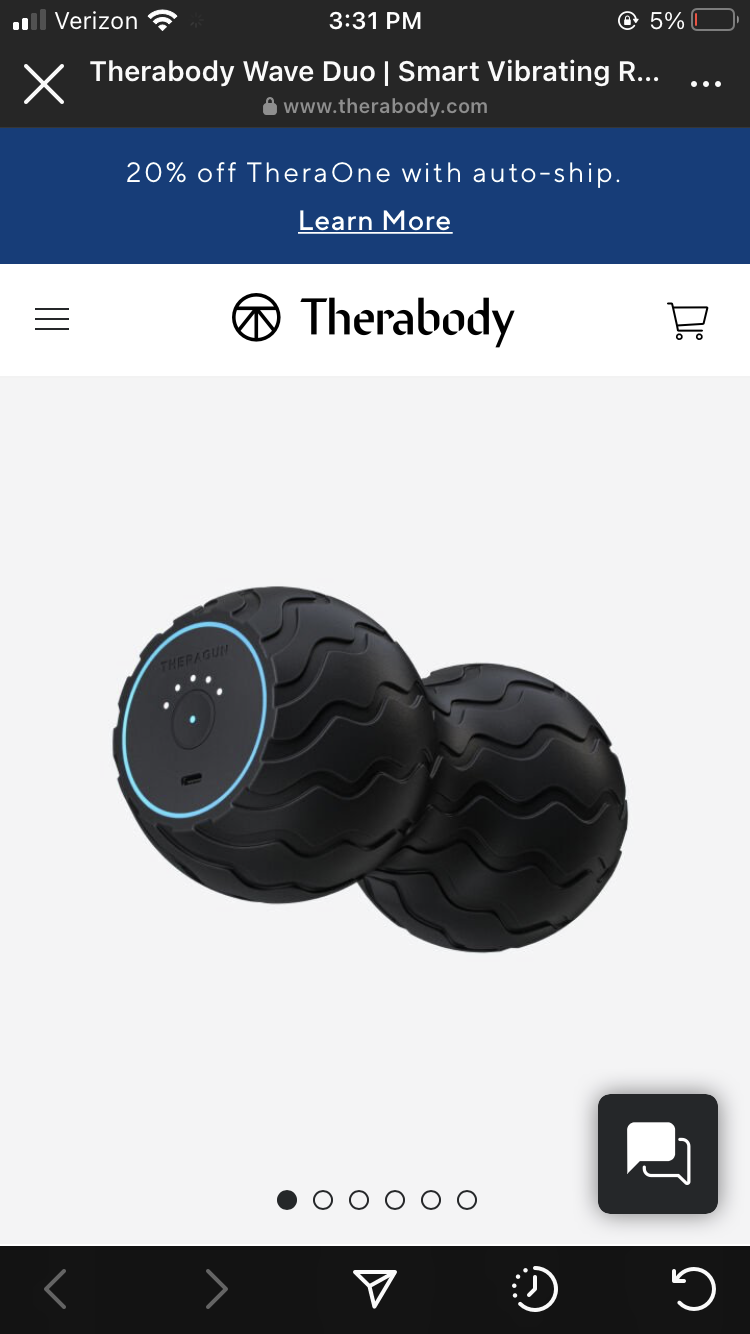
You can also find a wide range of live online shopping examples on other platforms. Aritzia, for instance, partnered with influencer Maria Marinaro to showcase new products and host a giveaway.
There's a comment section for chatting with the influencer and the brand, a Shopping Cart button, and options to share with other people.
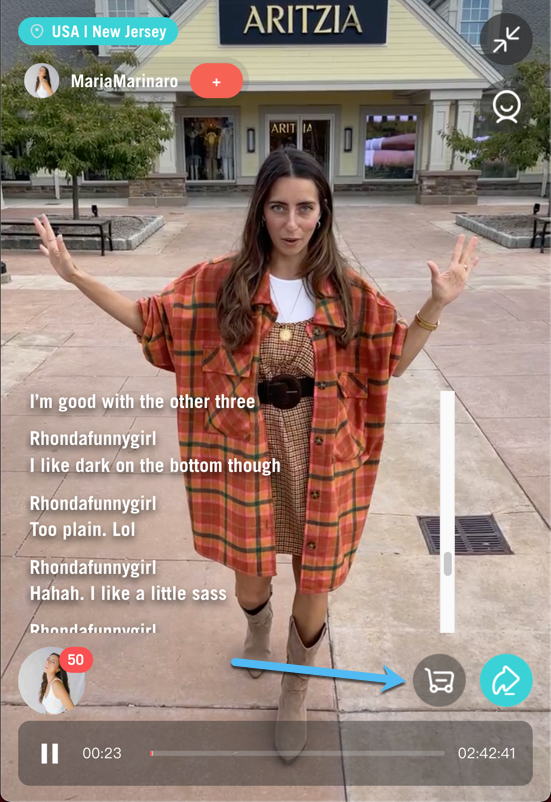
Talkshoplive provides a list of upcoming streams on its homepage. This example is for the Gym Bib, where they have a host explaining the product's functionality by wearing it around her neck and walking through the benefits of having a sweat towel around your neck in the gym.
As with most live shopping platforms, Talkshoplive has a Buy button, chatbox, and other tabs for details and images.
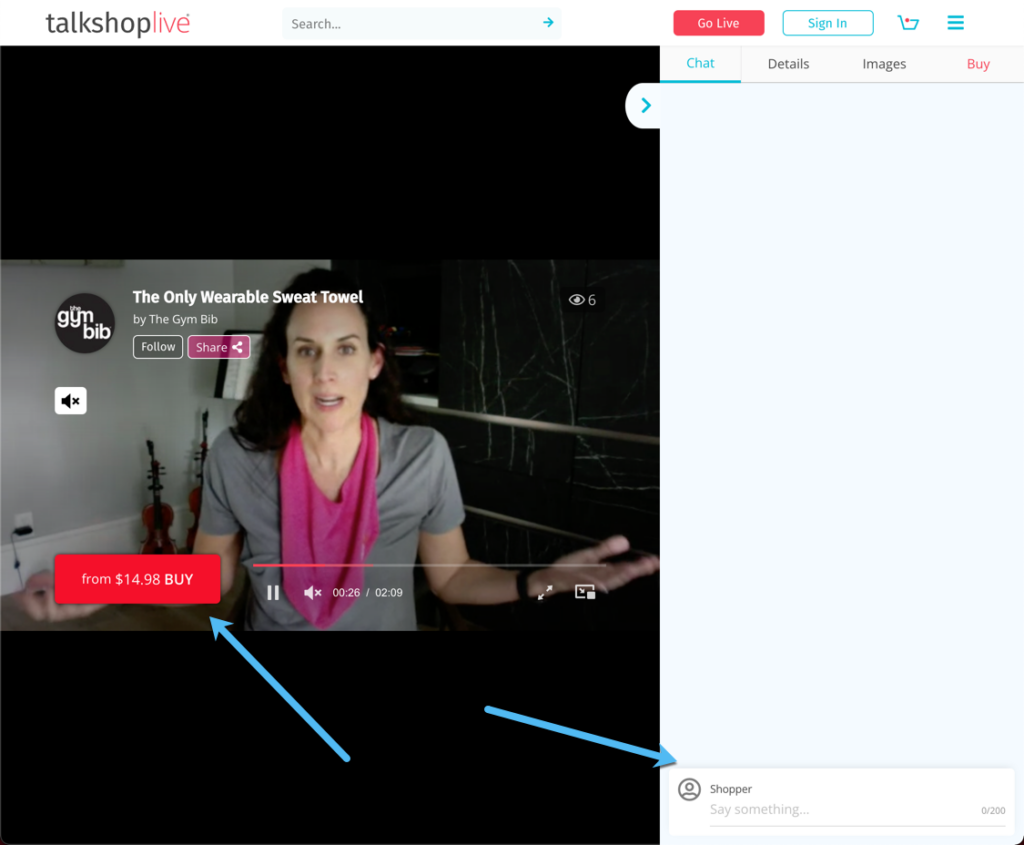
We particularly enjoy the Amazon Live page, since it's filled with an incredible number of live streams focused solely on shopping.
Not only that, but the live streams include an area at the bottom to showcase several products instead of just one.
The first example is from an influencer named Zulf who walks through some of his favorite cameras and lenses. He's a photographer, so it makes sense for him to host a Q&A about the topic as an affiliate to make money for his own platform. This is a great example of how influencers don't even have to partner with brands. The influencer marketing comes from those people utilizing their own streams to recommend any products they want.

We also found a home holiday guide with Kandi Burress, where she went through a myriad of home gift ideas like area rugs and electronics.
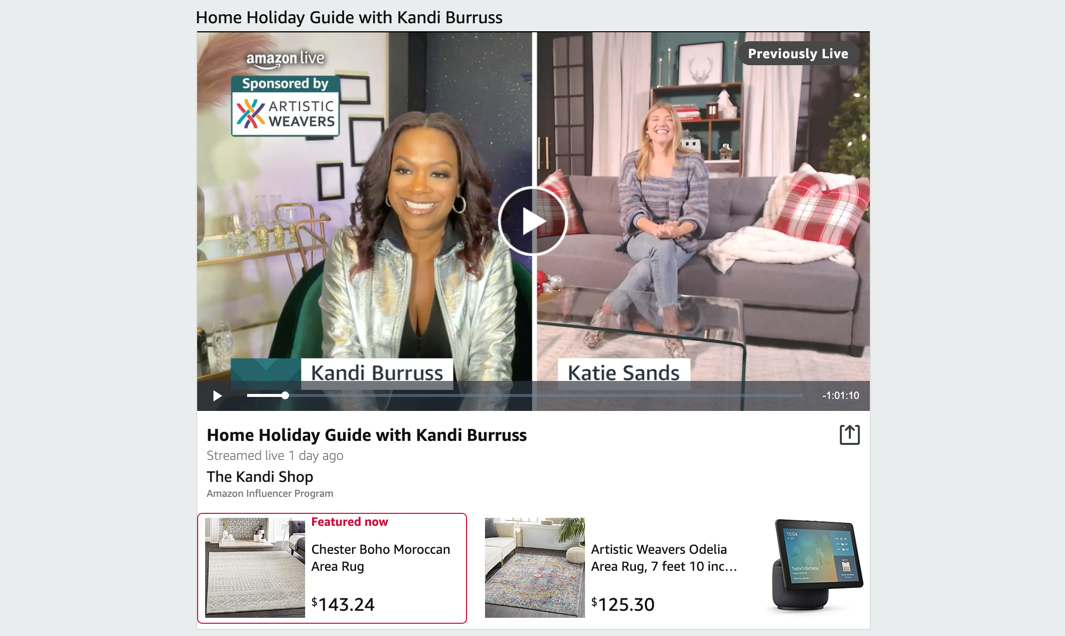
Finally, the Sun Joe brand streams regular episodes of its own little shopping channel, all hosted on Amazon. The brand sells power tools and yardwork equipment, allowing them to run TSN-style videos with demonstrations, links to the products at the bottom, and a conversation on the right if people have questions.

Our Conclusion
So, what is live shopping, and what does it mean for the future of ecommerce? Hopefully, it's a solution for selling that also provides entertainment value, stronger access to quality products, and monetization opportunities for influencers, notable figures, and celebrities. Currently, that's what we're seeing. Social media users tend to demand entertainment value over corporatization, so brands must partner with appealing individuals who are able to combine a product with some sort of entertainment. That wasn't possible before with TV shopping networks. Those networks have many elements of live shopping, but the value and entertainment value are lacking. In short, when you turn on QVC you're basically expecting to shop, since they constantly peddle goods around every corner, no matter how funny or informative the host actually is.
Live shopping, on the other hand, doesn't necessarily demand that the viewers are shoppers. The whole point is to eventually sell products to the people watching, but there must be some sort of entertainment value prior to that call to action. It's kind of like insurance commercials today; the insurance companies realized they must offer funny plotlines and memorable characters as opposed to constantly selling insurance. After all, who wants to hear a bunch of ads touting the wonderful features included in an insurance plan?
Live shopping is similar to that because it provides entertainment for those who want it, while also giving brands the exposure they need through social networks and ecommerce platforms.
If you ever find yourself asking, “what is live shopping?” or if you'd like to explain your own experiences with this type of shopping, leave us a comment in the section below.




Comments 0 Responses